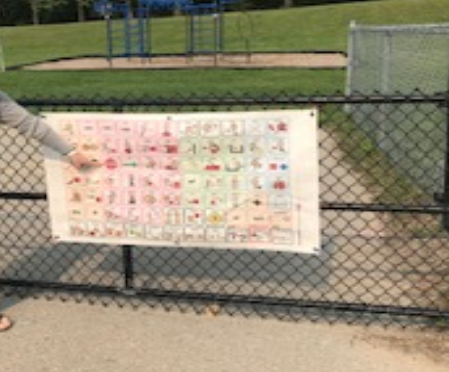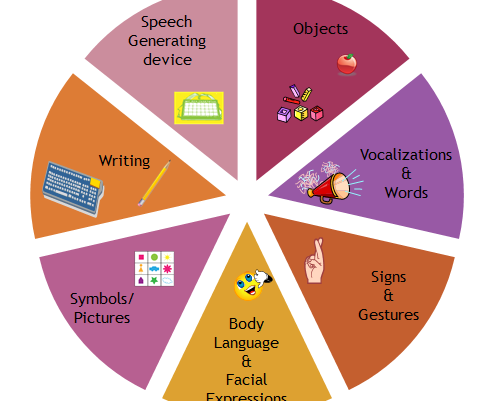Aided Language Stimulation (ALS)
What is ALS?
Aided Language Stimulation (ALS) refers to modeling Augmentative and Alternative Communication (AAC) language in everyday settings, in addition to verbally communicating with your child. The combination of both verbal and AAC language input is referred to as Aided Language Stimulation.
Why Use ALS?
AAC is a new language! It takes time for a child to learn their AAC device (i.e. what the picture symbols represent and where they are located) and how the AAC device can be used to support their communication needs. If we only speak to a child, they will not learn to use their AAC device. The child needs to see others continuously modeling how the AAC device can be used as a means of communication in everyday situations.
Resources
What is Aided Language Stimulation?
Aided Language: Making Language Visible and Common Mistakes
Why do I need to model language on my child’s device?
YouTube Video – Aided Language Stimulation Explained
YouTube Video – One Kids Place – Aided Language Stimulation
Model All Functions of Communication
There are a number of ways that we communicate with each other. For example, we can ask each other questions, share personal opinions, or make comments on our surroundings. It is important to model on your child’s AAC device the various ways we can communicate. Doing so will teach children that their AAC device can be used for a variety of communicative reasons.
Resources
The Functions of Communication: Various Forms of Communication to Model
Top 10 Functional, Creative Ways to Model Communication
Near-At-Hand

Communication happens everywhere! When a child uses AAC to communicate, it is important that their surrounding home environment is set up to have quick access to AAC. For example, the communication device should be in arm’s reach so that you and your child can use it when needing to communicate.
Another strategy for setting up the home environment for success is to use paper-based Communication Boards. Paper-based Communication Boards can be placed anywhere in the home (e.g. kitchen, bathroom, living room, bedroom, car) and can be used for modeling language and communicating. Paper-based Communication Boards are also great to use if, for some reason, the communication device is not within arms reach and/or is not available for use.
Please click the resource links below to access free paper-based Communication Boards.
Paper-Based Boards
Proloquo2Go (P2G)
AssistiveWare – Quick Communication Boards
Language Acquisition Through Motor Planning (LAMP)
PRC AAC Language Lab Free Manual Boards (LAMP, WordPower, Unity etc.)
Resources
AssistiveWare Article – Always Make AAC Available
Communication Temptations
The Communication Temptations strategy refers to intentionally structuring an environment, situation or activity as a means to encourage someone to communicate. Communicative Temptations is a strategy that aims to increase a child’s desire to communicate.
How?
- Find opportunities where your child is interested, motivated and engaged (e.g. eating fish crackers at snack time, having a story read to them, singing songs).
- Manipulate the situation so that you have control over the access to the desired outcome (e.g. hold fish crackers container in your hand or put on a higher shelf, enthusiastically read one page of the story book and hold your hand over the pages to come, sing one line of a song and then pause). This will tempt the child to communicate with you.
- Pause and WAIT for your child to initiate communication (e.g. reaching for or pointing to the fish crackers, saying “more” by pressing the more symbol on Proloquo2Go, using language on their step-by-step device etc.).
Resources
UGDSB CLSS Set it Up! Communication Temptations
York Region Preschool Speech and Language Program: Communication Temptations
KidsAbility Communication Temptations
ErinOakKids Communication Temptations
YouTube Video – South Tees NHS Speech Therapy: Communication Temptations
Expansions and Extensions
If your child is using words and/or phrases independently and spontaneously on their AAC device, the communication partner can implement the Expansions and Extensions Strategy, otherwise known as the ‘Add a word’ strategy. Typically, Expansions refer to adding a new conceptual knowledge word, while Extensions refer to adding grammatical information (Parker, 2014).
As a communication partner, we can add this word by modeling it both on the child’s AAC device and verbally. For example, if a child independently asks for more on their AAC device, we, as the communication partner, can model an expanded phrase on the AAC device such as more apple, while saying “you’re telling me you want more apple!” and giving the child what they asked for (more apples). Only expand and extend the communicators utterance by one word.
Examples (italicized words on AAC device)
Child: more blocks Communication Partner: want more blocks
Child: pizza Communication Partner: like pizza
Resources
PrAACtical AAC – Expanding Learners’ Single Word Utterances
PrAACtical AAC – Building Sentence Length: Say it Spontaneously (Parker, 2014)
Prompting with AAC
In addition to Aided Language Stimulation, there are prompts you can use to help your child learn their device. An example of a prompt could be directly pointing at a possible message the child could communicate and waiting, giving them time to process and respond. When children are first learning AAC, they will require many prompts. As children becomes more proficient with their device, we can decrease the amount of prompts used to help them, therefore increasing their independence. The following handouts can guide you in providing appropriate prompts for your child.
Resources
Prompting Techniques to Support AAC Use – Positive AACtion, Rocky Bay
Total Communication Approach
Children who use AAC will often use and benefit from a Total Communication Approach.

A Total Communication Approach is any combination of speech, body language, signs, objects, pictures, symbols, reading/writing and technology to get their message across.
All the different ways that a child communicates are valid. If you understand the message your child is giving, then it has been a successful communication.
Celebrate all forms of communication, in all languages, using a Total Communication Approach!
Clarification Strategies
When verbal speech is not clear or understood, there are various strategies that communication partners (e.g. parents, caregivers, family, friends) can use to assist children in helping clarify their message. The more that clarification strategies are used, the more confident the child will become in using these strategies independently during communication breakdowns. Below are supportive strategies to facilitate communication when a breakdown in communication occurs.
Resources
Communication Partner Strategies to Support Children with Communication Difficulties
*UGDSB CLSS Things to Try if People Don’t Understand My Words (SymbolStix Visuals)
*UGDSB CLSS Topic Board (Symbolstix Visuals): Dark and Light Skin Tone Options
*Please contact your child’s Speech Language Pathologist, Communicative Disorders Assistant, or Classroom Teacher to receive this resource.
Encouraging Communication Between Home and School
The following handouts may be used to encourage communication between the home and school environments.
Resources
*UGDSB CLSS Home and School News Sharing (Symbolstix Visuals): Dark and Light Skin Tone Options
*Please contact your child’s Speech Language Pathologist, Communicative Disorders Assistant, or Classroom Teacher to receive this resource.
Remote Learning Strategies
Children who use Augmentative and Alternative Communication Devices (AAC) to communicate will need parental support to access and participate in school, remote learning and within the community. As parents, you may use the following strategies to continue to support our child’s learning, language and literacy skills at home.
- Simplify instructions into smaller steps
- Allow extra time for your child to process what is said
- Stress and exaggerate key and important information
- Repeat and rephrase instructions and information, as needed
- Simplify the language to your child’s language level. Provide child-friendly terms and definitions when your child is struggling to understand and learn new concepts.
- Adjust the types of questions used:
- Use choice questions, e.g. “Is it ___ or ____?” (with or without real object supports)
- Use yes/no types of questions if other types of questions are too hard
- Use visuals (i.e. gestures, models, pictures, real objects) to support your child’s understanding of what was said
- Provide a means for your child to communicate to be able to interact and respond. Have your child’s augmentative or alternative device (AAC) available to him/her at all times.
- Interpret your child’s use of sounds, facial expressions, actions and words. Model for them what you think they are trying to express. Use their AAC device to model the words they would say if they could. Do not forget to also speak the words, while you are modeling the key words/ideas on their device.
- Ask your child’s teacher what you can be doing at home or how online classroom activities can be adapted to continue to support your child’s specific learning needs
Resources
AAC Boot Camp: Getting AAC Users Communicating – The Do’s and Don’ts of AAC
Social ACCts Program
SOCIAL: Scaffolding Opportunities to Create Inclusive AAC Learning
Communication Language and Speech (CLS) Services is excited to partner with teachers and educational assistants at high schools within UGDSB. The school Speech-Language Pathologist (SLP) and Communicative Disorders Assistant (CDA) will work in classrooms, alongside educators, supporting students with complex communication needs. The Social AACts Program is dedicated to supporting inclusive practices for students who use technology to communicate.
Covid-19 Resources
Below are resources that may help children understand our current Covid-19 circumstance.
Resources
Visuals for Washing Your Hands
Symbol Book: Upset by the News
Using Proloquo2Go (P2G) To Talk About the Coronavirus
Keeping Devices Clean and Hygienic
Video: The Wiggles Social Distancing Song

